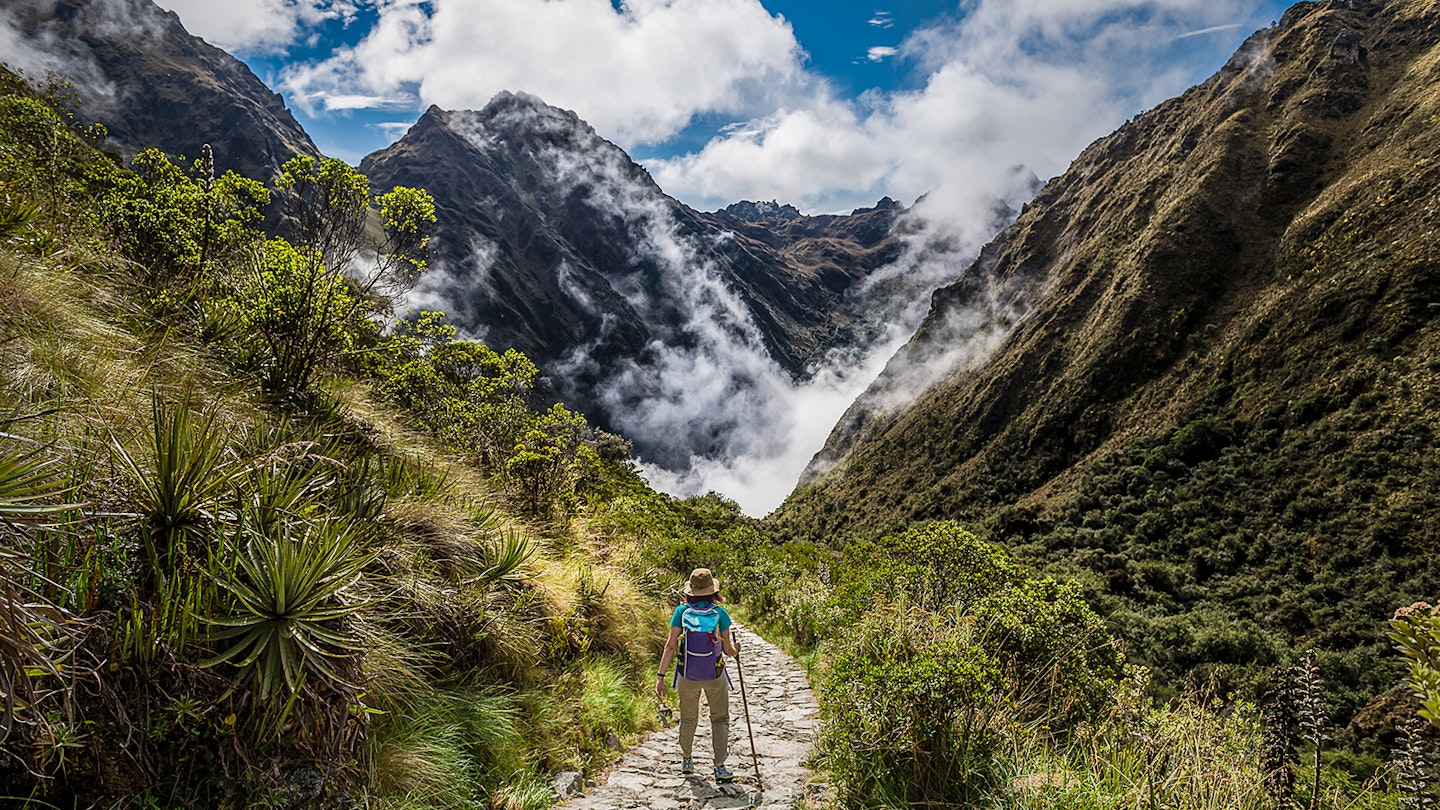Experience the Inca Trail
The Inca Trail is the most famous hike in South America—perhaps the world—and boasts a life-changing experience. Hiking the Inca Trail through the Sacred Valley to Machu Picchu is both arduous and awe-inspiring. Four days of cold, pain, and exhaustion dissipate as the mist lifts to reveal the emerald peaks and terraced ruins of the mystical ancient city.
Planning Your Inca Trail Adventure
If you’re itching to hit the trail, here are a few essential tips:
-
The best months to visit the Inca Trail are during the dry season, which falls between May and September. During this time, the trail can be busy, especially from June to August, coinciding with summer vacations in the northern hemisphere and national holidays in Peru. Consider taking advantage of quieter shoulder months, such as mid to late April, when summer concludes, and the lush greenery reappears without the crowds. Although the rainy season is best avoided, early October and the first weeks of November are usually safe for dry weather. Note that the Inca Trail is closed during February.

Make your Inca Trail reservations several months in advance—up to a year if you’re going during peak season. Remember, you can only visit with a licensed agency, and spots book up quickly.
Choose your trekking agency carefully. Shop around and ask lots of questions, such as what you’ll have to carry, how many people per tent, and how many porters will support the group. It’s worth paying more for a reputable agency that treats its porters well and respects the environment.
No matter the season, the trail gets cold at night, so bring a warm sleeping bag and layer your clothing.
Other must-brings include sturdy shoes, a flashlight (with fresh batteries), water-purification tablets, high-calorie snacks, and a basic first-aid kit.
Bring a stash of small Peruvian currency for buying bottled water and snacks along the way, as well as for tipping the guide, cook, and porters.
Altitude sickness is serious and can ruin your trip. The biggest mistake is flying directly to Cuzco (3326m/10,910ft) and expecting to hike the next day. Give yourself a few days to adjust to the altitude first.

If you cannot secure an Inca Trail reservation, don’t despair. Peru is full of excellent alternatives. If you want Cuzco to be your base, consider the 4 to 5 day Salkantay Trek, which begins just outside Cusco and ends in Aguas Calientes, offering breathtaking natural views throughout. The Lares Trek, a quick 2 to 3 day hike in the Andes, does not require permits and showcases turquoise lakes and indigenous communities. Alternatively, head north to the Amazonas region to explore Kuélap, a remarkable fortress older than Machu Picchu. You can also take an eight-hour bus ride from Lima to reach Cordillera Huayhuash in Huaraz, popular among adventure enthusiasts.

Start Your Journey
Are you ready for your Inca Trail adventure? We recommend the high-quality Inca Trail Tour from G Adventures. This tour covers all the highlights, including Cusco, the Sacred Valley, and Machu Picchu. On a green note, SA Expeditions and Enigma Peru provide personalized tours while focusing on sustainability and conservation. For further insights, you can explore traveler discussions surrounding the Inca Trail on Thorn Tree forum, where you can gather packing tips, on-the-ground advice, and suggestions for further travel.
This article was originally published in May 2012 and refreshed by Agnes Rivera in August 2018.





